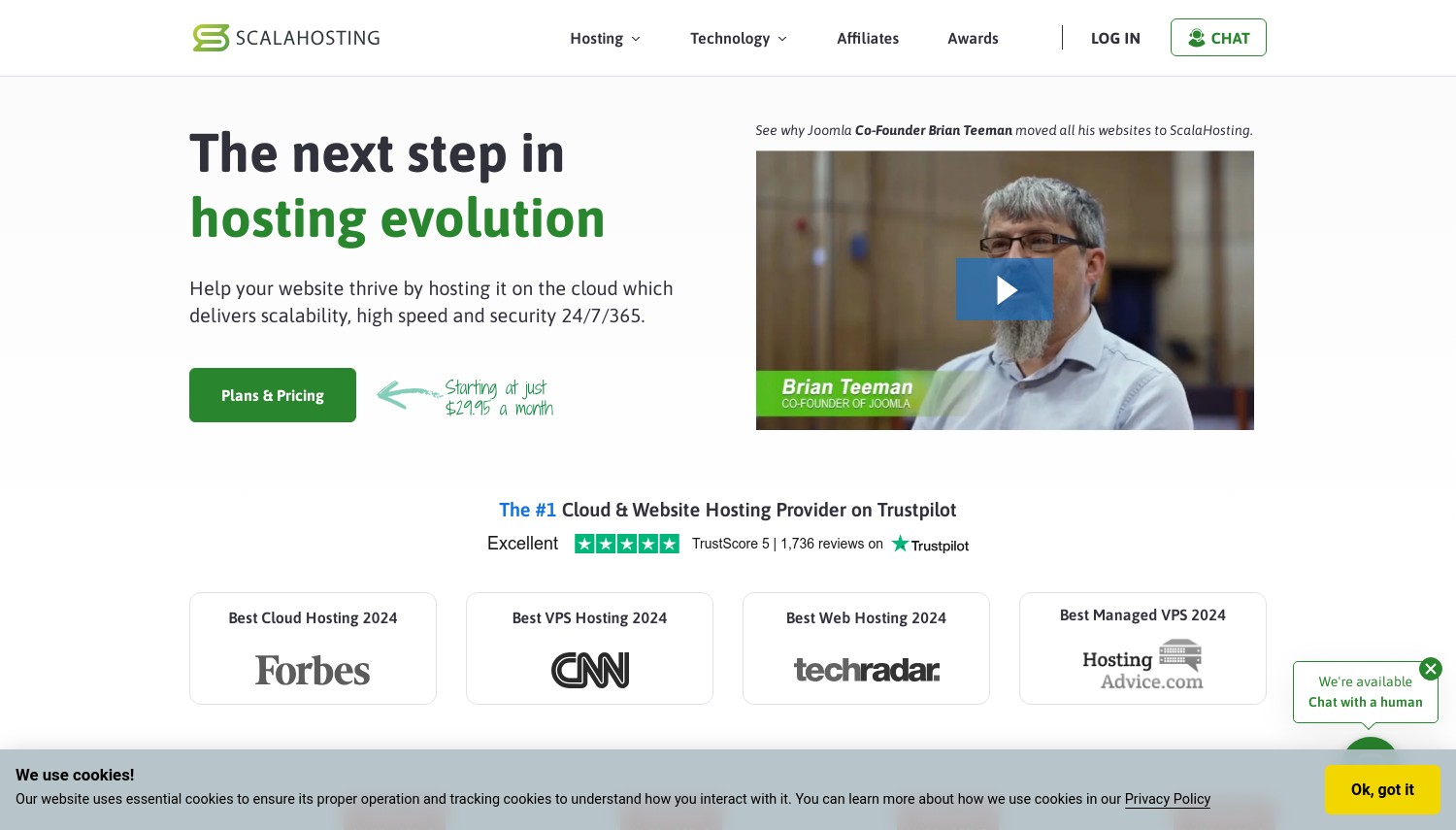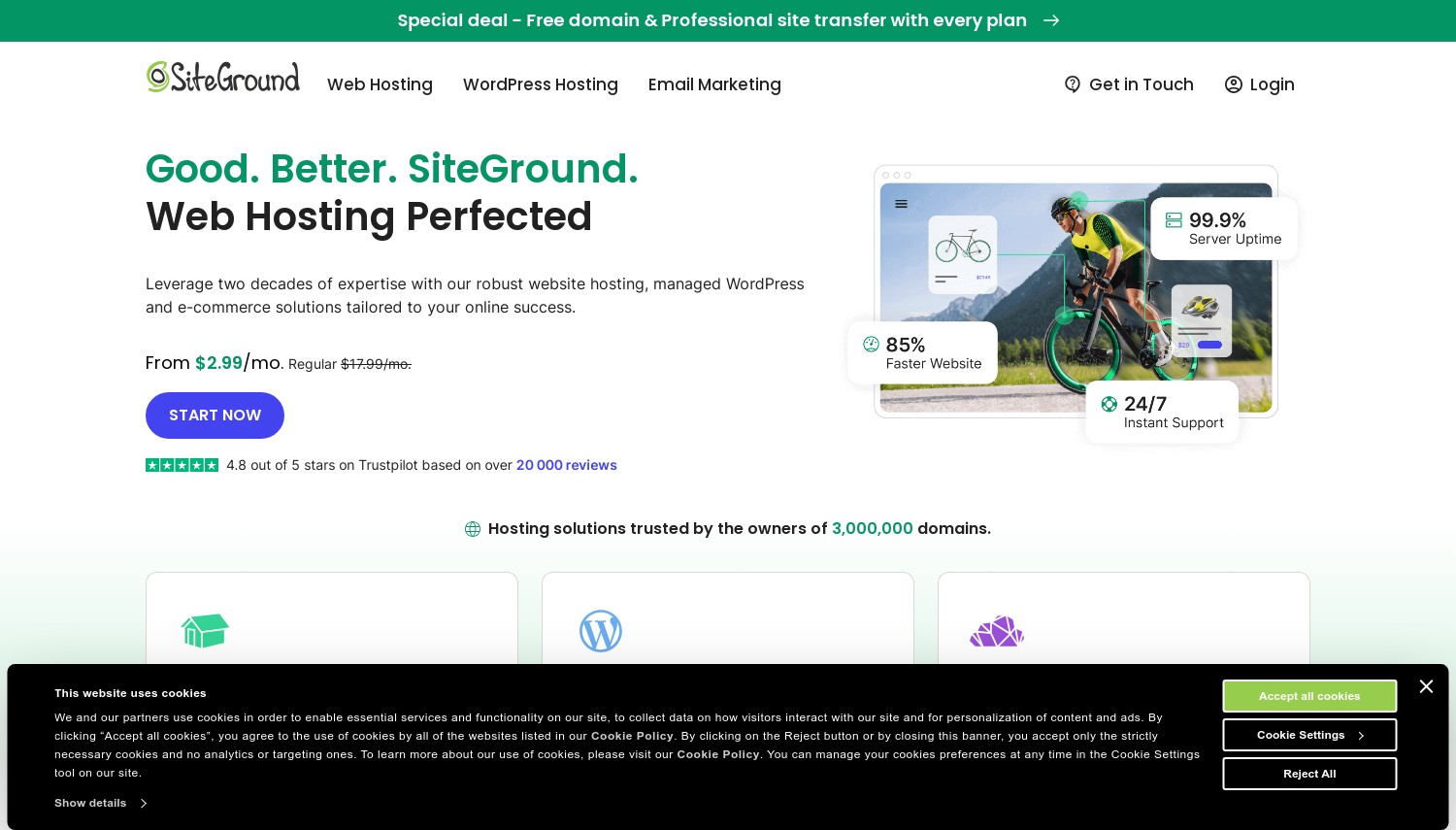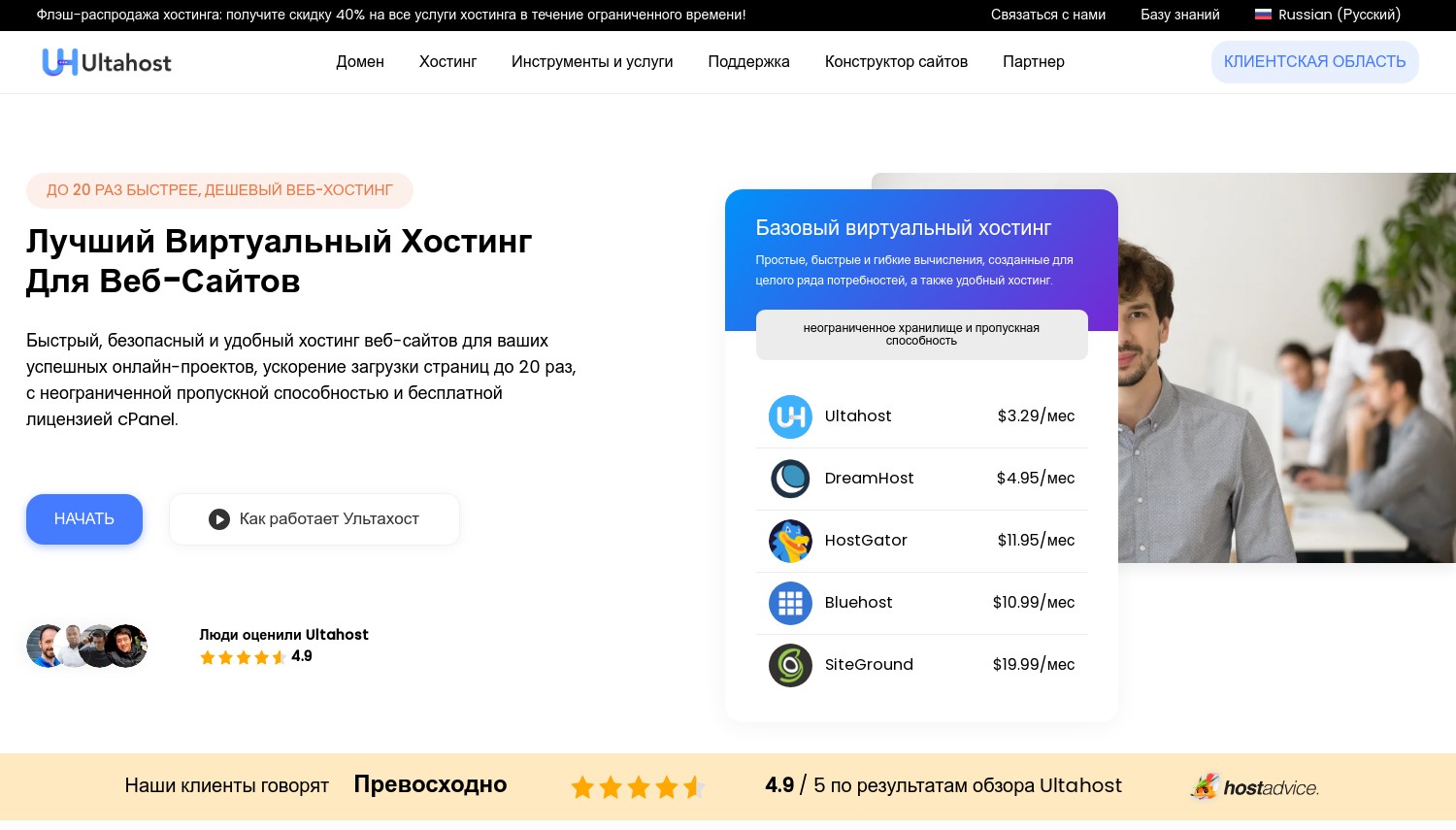On This Page: [hide]
Choosing the right platform to build your website on can be a game-changer, and Joomla emerges as a strong contender among content management systems. Renowned for its blend of flexibility, ease of use, and a comprehensive set of advanced features, Joomla presents a compelling case for anyone planning to start or enhance their digital presence.
 From extensive customization options and top-notch security measures to a supportive community and advanced features for developers, Joomla offers a versatile and scalable solution. Whether you’re a beginner looking to create your first website or a seasoned developer aiming for a complex web project, discover why Joomla should be your go-to choice in this in-depth exploration.
From extensive customization options and top-notch security measures to a supportive community and advanced features for developers, Joomla offers a versatile and scalable solution. Whether you’re a beginner looking to create your first website or a seasoned developer aiming for a complex web project, discover why Joomla should be your go-to choice in this in-depth exploration.
Why Choose Joomla for Your Website?
Deciding on the right CMS is a crucial step for anyone looking to build a new website. Joomla stands out as a powerful platform, offering a blend of user-friendliness, flexibility, and robust features. Here’s why Joomla should be at the top of your list when creating your next website.
First and foremost, Joomla is renowned for its intuitive interface. This aspect makes it an excellent choice for beginners and seasoned web developers alike. Users can navigate through the site management options with ease, making website administration a breeze. This ease of use does not come at the cost of functionality; Joomla maintains a wide array of sophisticated tools to cater to the needs of complex website projects.
- Extensive Customization Options: With Joomla, the power to personalize your website is at your fingertips. A vast selection of templates and extensions allows for the creation of unique and engaging websites. Whether you’re aiming for a minimalist blog or a feature-rich online store, Joomla’s customizable templates ensure your site will look and perform great on any device.
- Community and Support: Joomla’s supportive and active community is one of its greatest assets. Whether you need advice, troubleshooting help, or extensions, the Joomla community is there to assist. This network of users and developers creates a rich resource for learning and collaboration.
- Advanced Features for Developers: While Joomla is accessible to beginners, it also offers powerful features that developers will appreciate. Advanced user management, multilingual support, and the ability to set different templates for the front-end and back-end are just a few of the capabilities that make Joomla a versatile choice for developing sophisticated websites.
Joomla’s position in the CMS market is strong, thanks to its comprehensive feature set, which caters to a wide range of users, from novices to tech-savvy developers. Its open-source nature further ensures that it remains a flexible and evolving platform, continuously enhanced by contributions from users around the world. Choosing Joomla for your website means tapping into a rich ecosystem of functionality, support, and innovation.
Essential Steps Before Joomla Installation
Choosing the Right Hosting for Joomla
Identifying the optimal web hosting solution for your Joomla! website is fundamental. Web hosting serves as the backbone of your site, ensuring its accessibility on the internet. When selecting a hosting provider, focus on finding a perfect balance between performance, support, and cost.
For Joomla!, a Linux-based server with PHP and MySQL or PostgreSQL support is essential. Opt for hosting plans specifically tailored for Joomla! as they often come with convenient one-click installation features and optimized server configurations for better performance.
Finally, evaluate the customer service and support provided. A host with 24/7 customer support can prove invaluable, especially when immediate assistance is required. Reviews and testimonials can give you insights into the reliability and quality of service to expect.
Securing a Domain Name: Tips and Tricks
A domain name is your website’s address on the internet and plays a crucial role in branding and making your site memorable. When choosing a domain name, aim for something easy to pronounce, spell, and as short as possible.
Try to include keywords related to your business or industry, as this can help improve your website’s search engine optimization (SEO). However, ensure your domain name is unique to avoid confusion with existing sites.
Using domain name generators can help spark creativity and offer suggestions that match your site’s purpose. Once you have a list of potential names, check for availability. If your preferred domain is taken, these tools often suggest variations or different domain extensions beyond the classic .com, such as .net, .org, or niche extensions like .photo for photographers.
Always aim to secure a .com if possible, due to its widespread recognition and trustworthiness.
Protect your privacy and reduce spam by opting for domain privacy protection, which hides your personal contact information from the public domain registry. Remember, your domain name is a significant part of your brand identity, so choose wisely and ensure it aligns with your long-term vision for the site.
Installing Joomla: A Beginner’s Guide
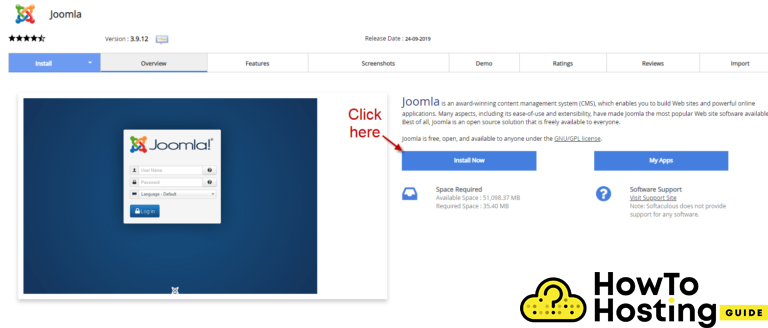
Joomla, as an open-source content management system, presents a flexible platform for both beginners and seasoned developers to craft websites that resonate with their vision. The process of installing Joomla encompasses several key phases, each contributing to the foundational structure of your website.
Downloading and Uploading Joomla
The initial step in the Joomla installation process is accessing the most recent version of Joomla from its official website. This ensures you benefit from the latest features and security enhancements.
Once the download is complete, the next stage involves uploading these files to your web hosting environment. This can be achieved through an FTP client, which facilitates the transfer of files from your local computer to the web server.
Creating a MySQL database is also vital at this stage, as it will store your site’s content and user information. This preparatory work is crucial for a smooth installation and setup process.
Manual Installation vs. One-Click Install
The choice between a manual installation and a one-click install often depends on the user’s technical confidence and the specifics of their hosting plan. A one-click install, offered by many hosting providers, simplifies the process by automating the installation steps. However, it may limit control over certain configurations and is not universally available.
Conversely, a manual installation provides a deeper understanding of the Joomla setup process and offers full control over the installation environment.
This method begins with the creation of a database and proceeds with uploading the Joomla files to your server. Following the upload, running the Joomla configuration wizard from your web browser is the crucial next step, guiding you through setting up your database and configuring basic site settings. While it requires a bit more effort, manual installation empowers you with comprehensive knowledge about the structure and setup of your Joomla site.
Navigating the Joomla Control Panel
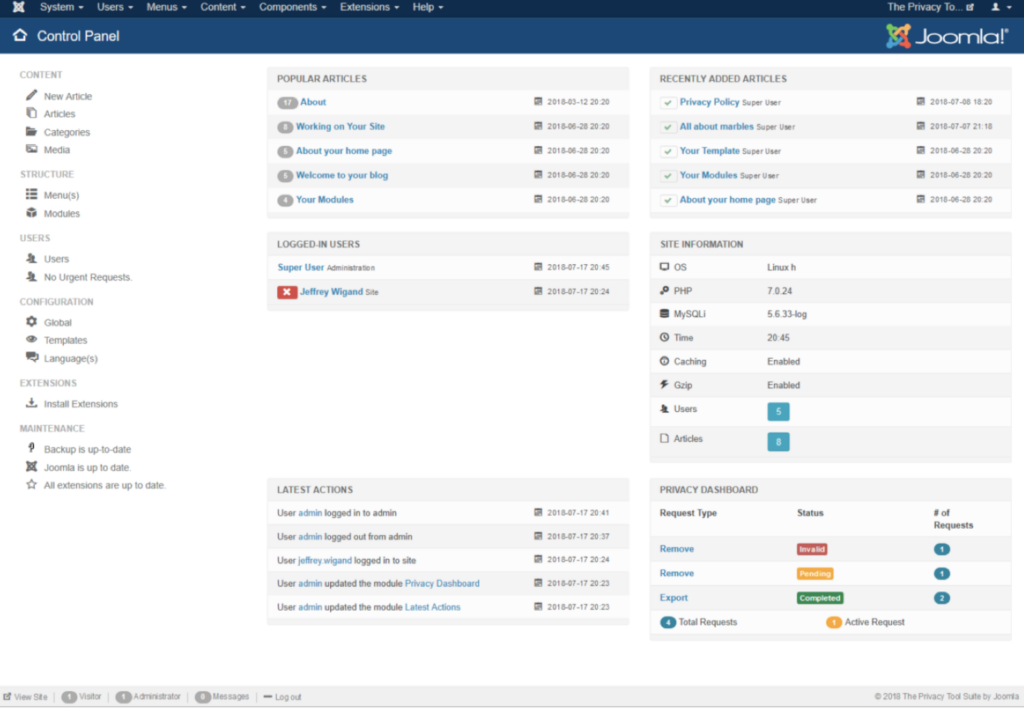
After installing Joomla, accessing the Joomla Control Panel is your gateway to managing and customizing your website. This interface is organized and intuitive, designed to facilitate easy navigation across different administrative functions.
Here, you can create new articles, manage menus and extensions, and alter the site’s appearance through templates and modules. Understanding how to efficiently navigate this control panel is fundamental for administering your Joomla site, enabling you to add content and extensions, and to customize settings to better align with your site’s objectives and user expectations.
Getting accustomed to this control panel is not just about embracing the technicalities of website management; it’s about exploring the potential of Joomla to create a dynamic online presence. As you become more familiar with the Joomla environment, you’ll discover the vast possibilities for site optimization and customization, making your website not only a reflection of your personal or business identity but also a secure, scalable, and engaging digital space for your audience.
Conclusively, both creating and managing a website with Joomla can be a fulfilling endeavor. By understanding the nuances of downloading, installing, and navigating through Joomla, you set a strong foundation for building a site that not only looks professional but is also secure, efficient, and tailored to your needs. Embrace these steps, and unlock the potential of Joomla as a powerful ally in your digital journey.
Customizing Your Joomla Site
Customizing your Joomla site involves a blend of artistic vision and technical adjustments to ensure your website not only looks appealing but also performs efficiently. Below, we cover crucial aspects of Joomla customization from selecting the ideal template, enhancing functionality with extensions, to tweaking global settings for a smoother site operation.
Selecting the Perfect Joomla Template
Choosing the right Joomla template is pivotal to setting the tone and look of your website. Think of the template as the website’s “outfit,” which should align with the purpose and audience of your site. Whether you’re aiming for a professional corporate look, a vibrant artistic layout, or a minimalist design, the Joomla ecosystem offers a wide array of choices. Start by exploring the Templates menu, accessible from the Joomla backend.
Joomla’s default offerings, such as Beez3 and Protostar, are good starting points where you can experiment with color schemes and imagery to reflect your brand accurately.
When selecting a template, consider how it will display on various devices. Responsive design is a must to ensure your site looks great on both desktops and mobile devices.
Pay close attention to template reviews, support availability, and update frequency to ensure your chosen template is well-supported and up-to-date. Customizing your selected template involves adjusting the color palette, font choices, and adding your logo to establish your brand’s visual identity on the web.
Adding Essential Joomla Extensions
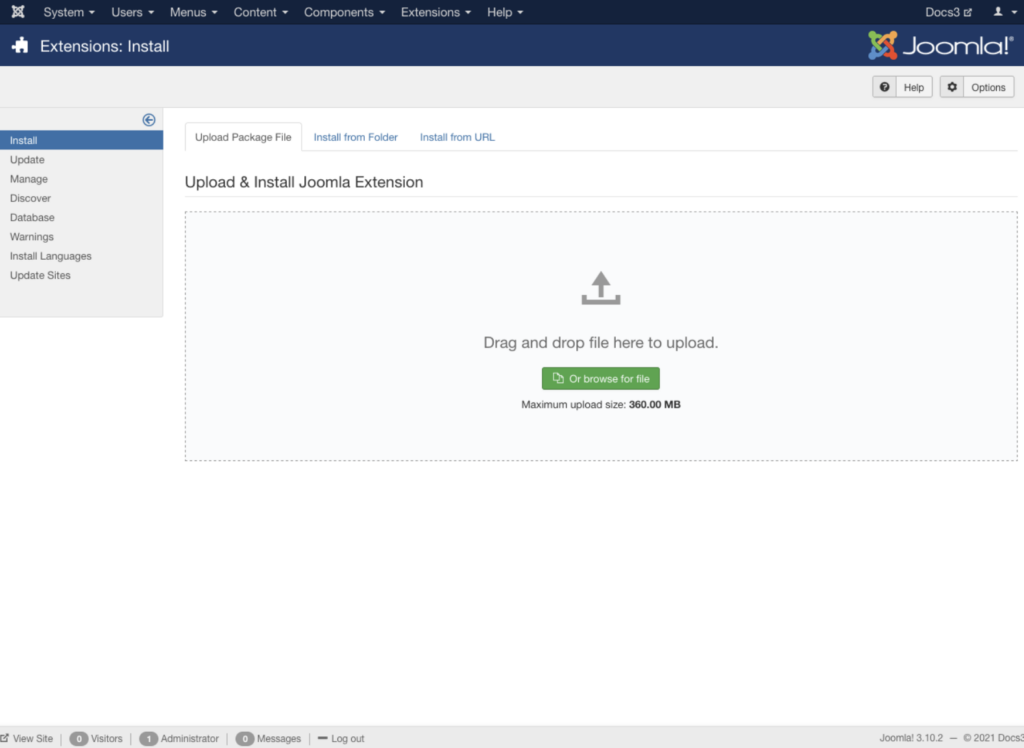
To elevate your website’s functionality beyond the core Joomla features, incorporating extensions is key. Joomla extensions serve as add-ons that introduce new features or improve existing ones.
Whether you need to add a contact form, create an image gallery, or integrate e-commerce functionalities, there’s likely an extension to suit your needs. The trick is to select extensions that align with your site’s goals without compromising on performance. Look for extensions with strong user reviews, reliable support, and compatibility with your Joomla version to ensure smooth integration.
Configuring extensions is typically straightforward, thanks to the user-friendly interfaces many developers provide. It allows you to tailor the extensions to fit your site’s design and user experience seamlessly. Remember, while it’s tempting to add numerous extensions for various features, focusing on essential functionalities that directly benefit your users is crucial for maintaining a fast and accessible site.
Configuring Global Settings for Optimal Performance
The foundation of a seamless Joomla site experience lies in the accurate configuration of its global settings. Through the Joomla backend, navigate to the global configuration section to manage site essentials like the site name, meta description for SEO, and URL formatting.
These settings play a significant role in how search engines understand and rank your site. In addition, enabling caching can significantly enhance your website’s loading times, improving overall user satisfaction.
Other critical global settings include defining the default language, adjusting date formats, and managing error reporting levels. Customizing these settings ensures that your site operates efficiently and caters to your audience’s expectations. Regularly reviewing and updating these configurations will help keep your Joomla site secure, fast, and user-friendly, offering your visitors a pleasant experience with every visit.
Content Management in Joomla
Managing content effectively is crucial for any website owner or developer. Joomla, a popular content management system, offers powerful tools for organizing, editing, and presenting digital content.
Whether you’re running a blog, business site, or a community portal, understanding Joomla’s content management capabilities can greatly enhance your website’s functionality and user experience.
Creating Categories for Organized Content

Categories in Joomla are essential for keeping your content organized and searchable. They allow you to group articles by topic, making it easier for users to find the information they’re interested in. Here’s a simple guide to creating categories in Joomla:
- Access the Joomla dashboard and navigate to Content > Categories > Add New Category.
- Enter a Title for your category, such as “Solar Power” for a renewable energy site. This title will be visible to your site visitors, so make it descriptive and user-friendly.
- Provide a Description for your category. While optional, a description can help both users and search engines understand the type of content grouped under this category.
- If applicable, select a Parent Category to create a hierarchy (e.g., “Renewable Energy” as a parent category to “Solar Power”).
- Click Save or Save & Close to create your category.
By carefully categorizing your content, you make your website more navigable and improve its SEO performance, helping your audience find the right information quickly and efficiently.
Adding and Managing Articles
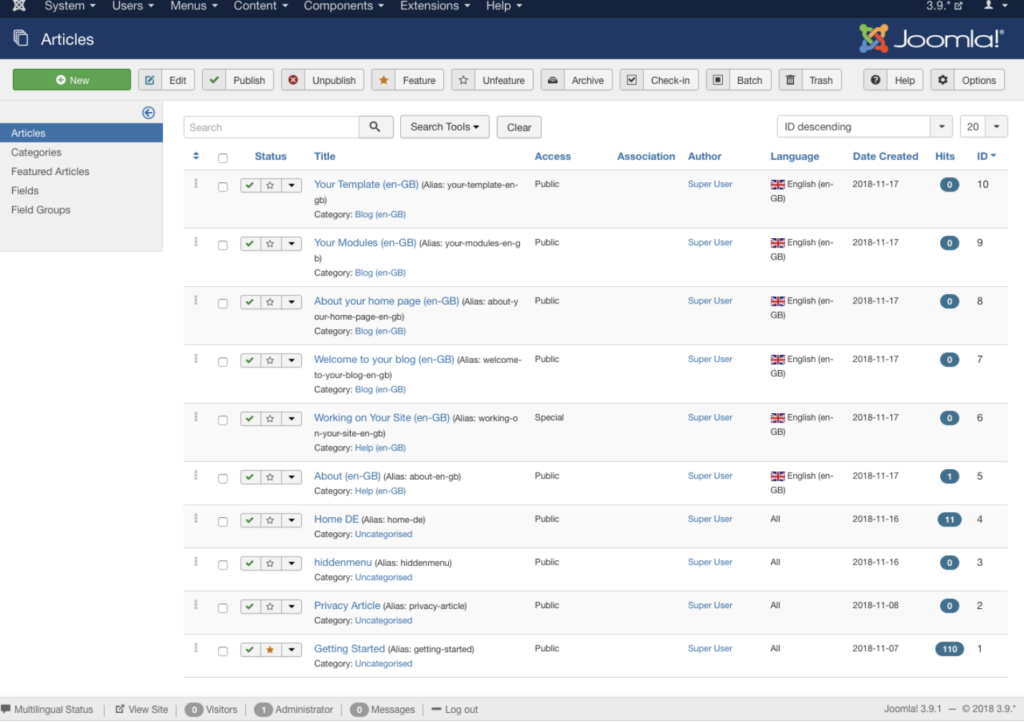
Adding and managing articles in Joomla is a straightforward process that forms the core of your website’s content strategy. Follow these steps to add articles effectively:
- In the Joomla dashboard, go to Content > Articles and click on the New button to create a new article.
- Title your article clearly and concisely. The title should give readers and search engines a good idea of what the article covers.
- Write your content in the article editor. You can format text, add images, and include links to make your article more engaging and informative.
- Assign your article to a category. This categorization helps structure your site, making content discovery easier for visitors.
- Before publishing, utilize the SEO settings to add a meta description and keywords, improving your article’s search engine visibility.
- Click Save or Save & Close to publish your article.
Regularly adding fresh, relevant articles and managing existing content ensures your website stays up-to-date and continues to attract and engage visitors.
Enhancing Your Site with Multimedia
Incorporating multimedia elements into your Joomla site can significantly enhance the user experience, making your content more engaging and accessible. Whether it’s images, videos, or audio clips, multimedia can help convey your message more effectively and capture the audience’s attention. To add multimedia elements:
- While editing an article, click on the Image button below the editor to insert images. You can upload new images or select from previously uploaded ones.
- To incorporate videos, use a video embedding extension or add HTML code from platforms like YouTube or Vimeo in your article’s HTML view.
- For audio, you may also use relevant Joomla extensions or embed code from audio hosting platforms.
- Always ensure that multimedia elements are optimized for the web to improve loading times and not negatively impact your site’s performance.
By leveraging multimedia, you not only improve the aesthetics of your site but also its functionality, providing a richer, more interactive user experience.
Effective content management with Joomla involves a blend of well-structured information architecture and engaging, multimedia-rich content. By following the guidelines for creating categories, adding articles, and incorporating multimedia, you can develop a dynamic website that serves your audience’s needs and boosts your online presence.
Building Navigation Menus in Joomla
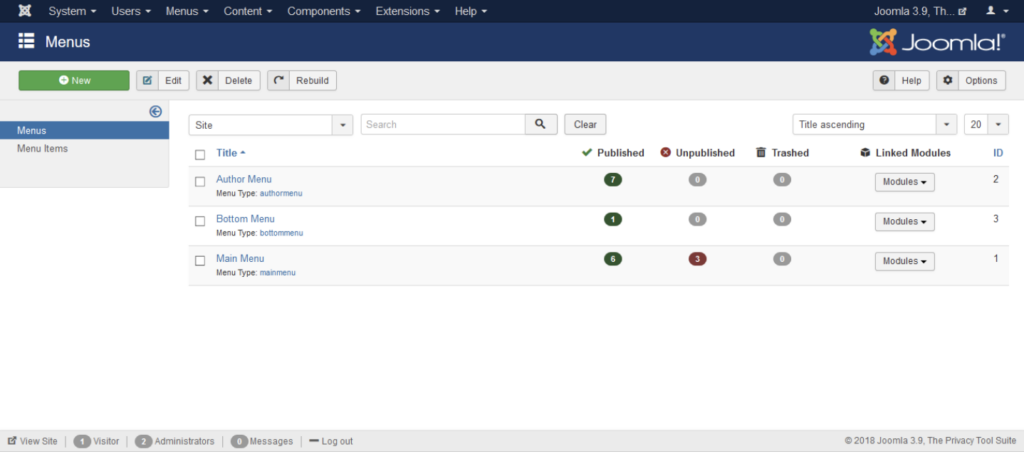
Building navigation menus in Joomla is a straightforward process that significantly enhances the structure and user experience of your website. These menus not only guide your visitors seamlessly through your site’s content but also contribute to its aesthetic and functional appeal.
Let’s delve into how you can effectively design your site’s structure with menu items and link articles for easy access, aligning with simple navigation principles.
Designing Your Site’s Structure with Menu Items
When starting with Joomla, one of the crucial steps is to establish a clear and intuitive structure for your website. This involves deciding on how you want to organize your content and then applying this structure through the creation of menu items. Here’s a simplified approach to designing your site’s structure with Joomla menus:
- Planning Your Structure: Begin by sketching out a map of your website’s structure. This can be as simple as a list of main sections and sub-sections that you wish to have. Consider what content your site will offer and how you want your audience to interact with it.
- Creating Menu Items: In Joomla, navigate to Menus -> Main Menu and select Add New Menu Item. Here, define your menu’s structure by creating items for all your main sections. For example, if you’re building a blog, you might include menu items for “Home,” “About Us,” “Blog,” and “Contact Us.”
- Assigning Content: Decide which type of content each menu item will display. Joomla offers various options like “Featured Articles,” “Contact Forms,” and “Blog Categories” that can help you align content with the appropriate menu item.
- Testing and Refinement: After setting up your menu, preview your site to ensure that the navigation accurately reflects your planned structure. It’s often beneficial to seek feedback at this stage to make necessary adjustments.
Remember, the goal is to make it as easy as possible for your visitors to find what they’re looking for, thereby enhancing their experience on your website.
Linking Articles to the Menu for Easy Access
Incorporating articles into your Joomla menu contributes to a richer, more engaging user experience by providing direct access to key content right from the main navigation bar. Here’s how to add articles to your Joomla menu with ease:
- Create or Select an Article: Begin by ensuring you have the article you wish to link to. If not, create a new article by going to Content -> Articles -> Add New Article.
- Adding a Menu Item for the Article: Go to Menus ; Main Menu ; Add New Menu Item. Provide a title for this menu item that will appeal to your audience and clearly indicate the article’s content.
- Selecting the Menu Item Type: Click on the “Select” button in the “Menu Item Type” field, choose “Articles,” and then select “Single Article.” This setting is tailored for linking directly to an individual article.
- Linking the Article: After selecting the “Single Article” menu item type, you’ll be prompted to select the article you want to link to. Navigate through your list of articles and choose the one you wish to feature in your menu.
- Save and Enjoy: With your article selected, click “Save & Close.” Your article will now be accessible directly from the navigation menu, offering a seamless path for visitors to access your featured content.
By linking articles to your Joomla menu, you make it simpler for visitors to find and engage with your content, whether it’s a blog post, a how-to guide, or a featured story. This approach helps in keeping your site organized and enhances the overall user experience by providing quick and direct access to important sections of your website.
Improving Joomla Site Security
Implementing strong security measures ensures that your website remains a safe space for users, reinforcing trust and credibility in your online presence.
Basic Joomla Security Best Practices
Enhancing your Joomla site’s security starts with basic practices that form the foundation of a secure website. Adhering to these practices can significantly reduce the risk of vulnerabilities and potential attacks.
- Regular Updates: Keep Joomla and its extensions up to date. Each update not only brings new features and performance improvements but more importantly, it patches security vulnerabilities.
- Strong Passwords: Enforce the creation of strong, complex passwords for all user accounts. This simple step can protect against brute force attacks.
- User Privileges: Limit user privileges to the minimum necessary for their role. Regularly review and adjust permissions to ensure that users have no more access than they need.
- Security Extensions: Install reputable security extensions that provide real-time monitoring and defense against common threats. These tools can be invaluable for early detection and mitigation of risks.
- SSL/TLS Encryption: Implement SSL/TLS encryption to secure data transmission between your website and its users. This is crucial for protecting sensitive information from being intercepted.
- Regular Backups: Maintain regular backups of your website and database. In the event of a security breach, having a recent backup can be the key to quick recovery.
By incorporating these basic security measures, you considerably fortify your Joomla site against various cyber threats, creating a safer environment for both you and your website’s users.
Essential Joomla SEO Settings
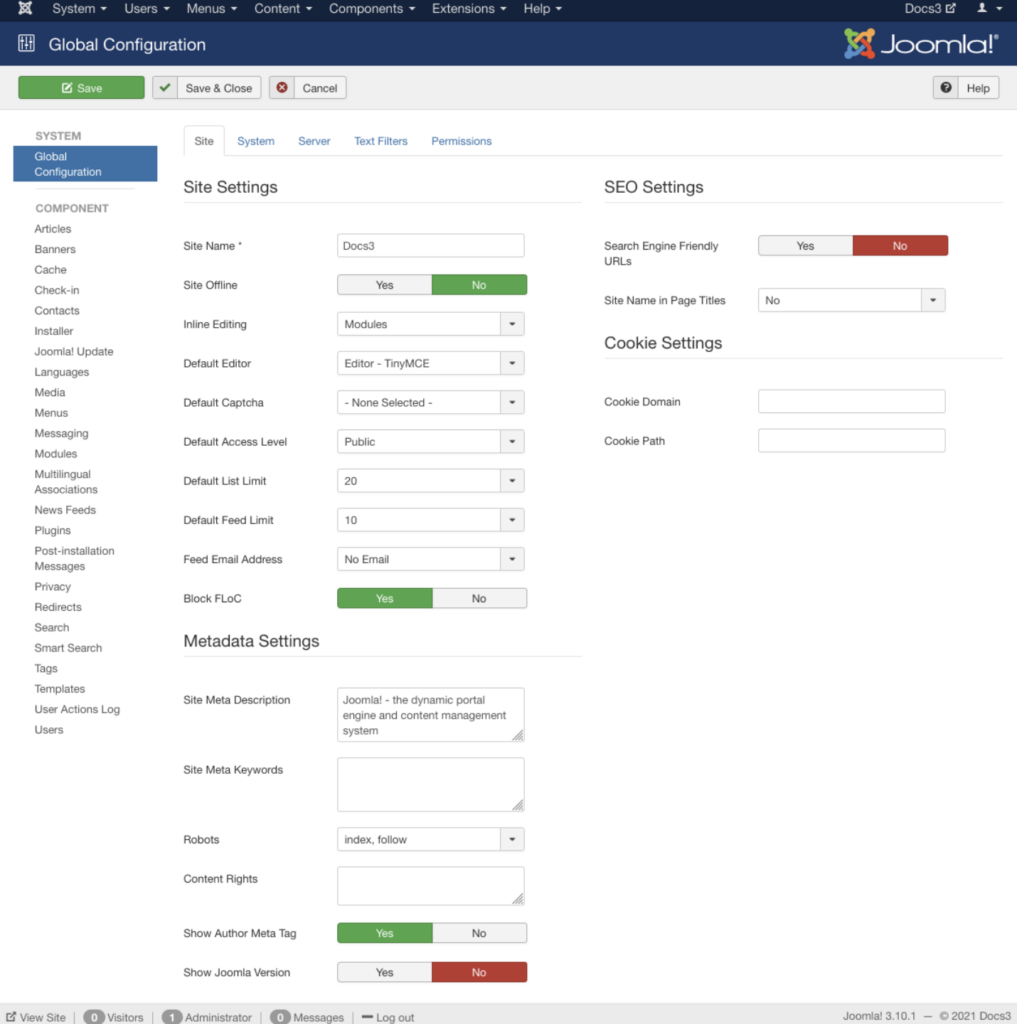
To kickstart your Joomla SEO, it’s fundamental to fine-tune your website’s settings. First, ensure your site is visible to search engines by checking the global settings for any unintentional blocks. Activating SEO-friendly URLs in the Joomla! Global Configuration area makes your site easier for search engines to crawl.
This involves changing URLs from dynamic to static forms, which are more descriptive and relevant to your content. Additionally, leveraging the built-in caching and enabling gzip compression can significantly improve site speed, positively affecting your SEO rankings. Remember to also set the correct Robots meta tag for pages you do or don’t want indexed, guiding search engines effectively.
Using Metadata and Keywords Effectively
Metadata and keywords are the backbone of SEO. Starting with the site name and meta description, ensure that these elements clearly describe your website and include keywords you’ve identified through research. Each page and article on your site should have a unique title and meta description that succinctly summarize the page’s content while incorporating target keywords.
When it comes to content creation, integrate keywords naturally to maintain readability for your audience. Utilize header tags to structure your articles, making sure to include keywords in a way that enhances, rather than disrupts, the reader’s experience.
Importantly, adding alt tags to images not only improves accessibility but also gives you another opportunity to reinforce your keywords. Lastly, remember to regularly update your content to keep it fresh and relevant, which is a factor search engines consider when ranking sites.
By systematically applying these settings and techniques, you’re setting up your Joomla website for greater search engine recognition. This involves a blend of technical adjustments, strategic content creation, and ongoing management. With these efforts, your site is well-positioned to climb up the search engine rankings, attract more visitors, and achieve its potential in the digital environment.
Remember, SEO is not a one-time task but a continuous process of optimization and improvement.
Backing up Your Joomla Site
Ensuring the safety of your website data through regular backups is a key step for any Joomla site owner. Backups serve as a safeguard against data loss due to issues like hacking, server failure, or accidental content deletion.
By securing a recent backup, you can restore your site to its previous state with minimal downtime, preserving your hard work and maintaining the continuity of your online presence.
Manual Backups: How and Why
Creating manual backups might seem like a chore, but it’s a critical step towards safeguarding your Joomla website. Manual backup involves saving a copy of your site’s files and database to a secure location.
Begin by accessing the File Manager through your hosting control panel. Navigate to your main Joomla installation folder and select the Download icon to save a .zip archive of your site.
This method allows you to have full control over the backup process, choosing exactly when and which parts of your site to backup. While manual backups require more effort, they’re a reliable way to ensure that you have a current copy of your site whenever needed.
- Access the File Manager via your hosting panel.
- Open the main Joomla installation directory.
- Select the ‘Download’ icon to compress and download your site files as a .zip archive.
Backing up the database involves exporting the SQL database file through tools like phpMyAdmin, also accessible via your hosting control panel. Together, these steps ensure you have both your website’s files and its database, which are essential for a full restoration.
Automated Backups with Extensions
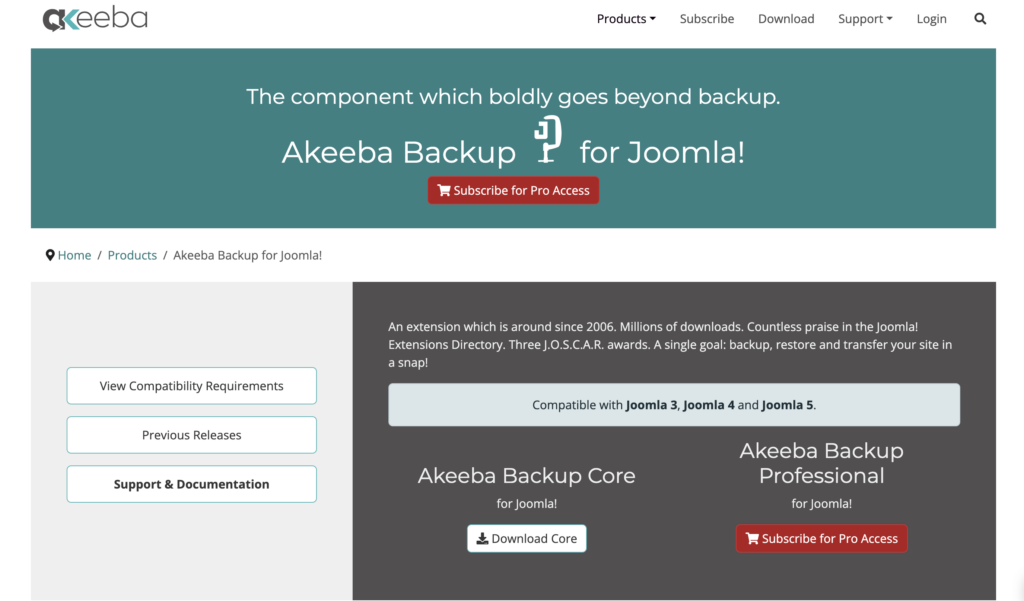
Automating your Joomla backups can significantly reduce the risk of data loss by ensuring regular, consistent backups without manual intervention. Akeeba Backup, a widely used Joomla extension, simplifies the backup process.
Once installed, it allows you to schedule automatic backups, create full-site backups, and restore your site directly from the backend of your Joomla installation. To use Akeeba Backup.
- Download the extension from the Akeeba website and install it via your Joomla backend under Extensions > Install.
- Navigate to Components > Akeeba Backup and run the Configuration Wizard to optimize the backup settings for your site.
- Choose between instant backups with ‘Backup Now’ or schedule regular backups under ‘Schedule Automatic Backups’.
This hands-off approach not only saves time but also ensures that you always have a recent backup available, making it easier to recover from unexpected issues.
In addition, some hosting providers, such as Hostinger, offer automatic backup solutions, creating either daily or weekly backups based on your hosting plan. These backups can be accessed and managed through the hosting control panel, providing an easy-to-use, integrated solution for both file and database backups.
Regardless of the method chosen, the key to effective data protection is consistency. Whether opting for manual backups for more control or automating the process with extensions, regularly updating your backups is essential.
This strategy, coupled with secure storage – be it on an external hard drive, cloud storage, or utilizing your hosting provider’s services – ensures that your Joomla site remains safe and recoverable under any circumstances.
Maintaining and Updating Your Joomla Site
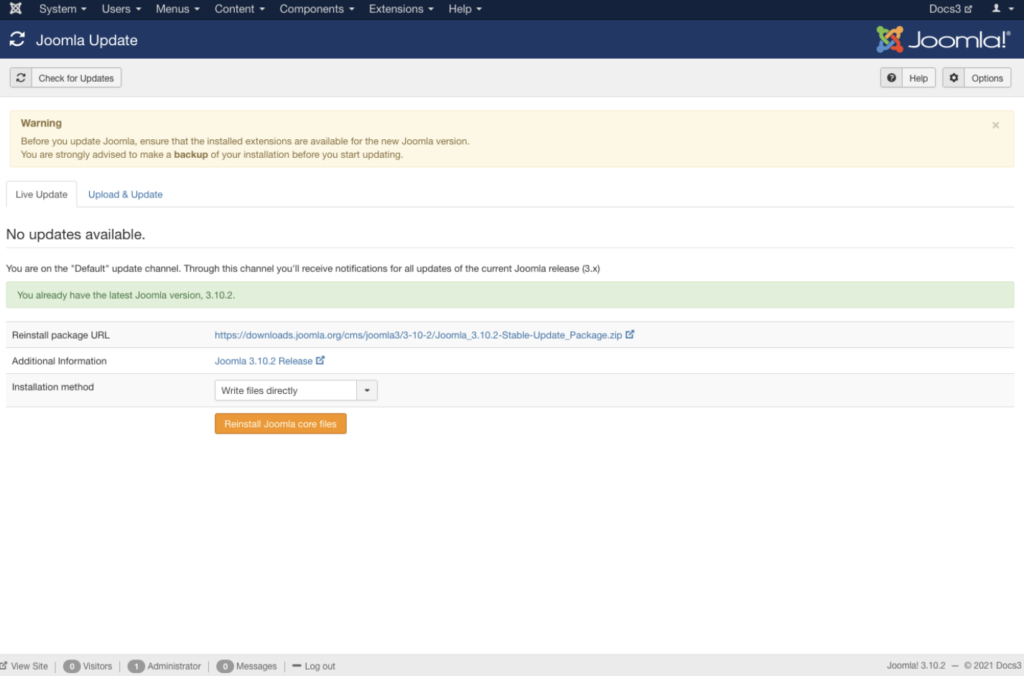
Updates serve a multi-faceted purpose, including security patches, performance enhancements, and the introduction of new, useful features. A well-maintained Joomla site ensures a seamless user experience, reduced risk of security vulnerabilities, and better overall performance.
Regular maintenance tasks, such as checking for and applying updates, backing up your site, and reviewing user permissions, are crucial. By dedicating a bit of time to these maintenance tasks, you can safeguard your Joomla site and ensure its optimal operation.
How to Perform Joomla Updates Safely
Updating Joomla securely is paramount to avoid potential issues that could lead to website downtime or data loss. Here’s a concise guide to help you through the update process:
- Create a Backup: Before initiating any updates, ensure that you have a current backup of your website. This safety net allows you to restore your site to its previous state in case anything goes awry during the update process.
- Check for Updates: Joomla makes it easy to identify available updates by displaying notifications in your control panel. These alerts inform you about the latest Joomla versions and available patches for your current setup.
- Update Preparation: Review the release notes for the updates to understand the changes and the impact they might have on your site. Prepare your site for the update by temporarily disabling any third-party extensions or custom templates that might conflict with the update.
- Perform the Update: Navigate to the update section within your Joomla control panel and follow the prompts to execute the update. It’s typically a straightforward process, requiring only a few clicks to complete.
- Test Your Site: Following the update, test your website thoroughly to ensure everything is functioning as expected. Check your site’s layout, the performance of extensions, and the overall site speed.
Regular Maintenance Tasks for Joomla
Regular upkeep of your Joomla site helps in catching potential issues early, enhancing security, and ensuring your site runs smoothly. Below is a checklist of maintenance tasks you should perform consistently:
- Review and Update Extensions: Just like the core Joomla software, extensions receive updates for security fixes, new features, and improvements. Regularly check for and install these updates to maintain compatibility and security.
- Monitor User Access: Regularly review user permissions and roles to ensure that access is limited based on necessity. Remove inactive user accounts and adjust permissions as needed to minimize potential security risks.
- Optimize Database: Over time, the Joomla database can accumulate overhead that affects site performance. Use the built-in optimization tools within Joomla or extensions designed for database maintenance to keep your site running efficiently.
- Backup Regularly: Your site’s backup frequency should align with how often you update or modify your site. For active websites, daily backups might be necessary, while weekly backups may suffice for more static sites. Always store backups in multiple, secure locations for redundancy.
Effectively maintaining and updating your Joomla site involves a mix of regular checks, timely updates, and employing robust security measures. These practices ensure your website remains secure, user-friendly, and fully functional, catering to the needs of your audience with ease.
Joomla: Frequently Asked Questions (FAQ)
How Long Does It Take to Launch a Joomla Site?
Launching a Joomla site can vary in time, depending on your technical skill level and the complexity of the website you’re planning to build. For beginners, using the quick-start package on launch.joomla.org, a basic site can be up and running in just a few hours. This streamlined process involves selecting a template, customizing your layout, and adding content.
For more customized or complex sites, including the integration of various extensions or custom development work, the process could take from several days to a few weeks. Planning and structuring your content and design beforehand can significantly reduce the development time.
Can I Migrate to Joomla from Another CMS?
Migrating to Joomla from another CMS, such as WordPress or Drupal, is definitely possible and is facilitated by Joomla’s flexible system. The migration process involves exporting content from your current platform and importing it into Joomla. There are extensions available that are designed to ease the migration process, handling the transfer of articles, categories, menus, users, and other essential elements.
While the basic migration can be straightforward, ensuring that your website’s SEO rankings and URLs remain unaffected requires careful planning and execution. Seeking guidance from Joomla’s supportive community forums or professional services is recommended for a smoother transition.
Is Joomla SEO-Friendly?
Joomla is designed with SEO in mind, offering features that can help improve your site’s visibility in search engine results. With Joomla, you have the ability to create SEO-friendly URLs, implement metadata and keywords for pages and articles, and use various extensions that further optimize your site for search engines.
Additionally, Joomla’s structure allows for easy creation of a sitemap, which is essential for search engines to crawl and index your site effectively. While Joomla provides a solid foundation for SEO, achieving the best results may require the employment of additional optimization strategies and tools.
What Are the Costs Associated with Joomla Site Development?
One of the main advantages of Joomla is that it is a free, open-source platform, which means there are no costs to download and use the software itself. However, building a Joomla site can incur other expenses. Key factors include:
- Hosting: Web hosting fees vary depending on the provider and the type of hosting plan you choose. Some hosts offer specialized Joomla hosting plans that might include automated installations and optimized performance.
- Domain Name: If you don’t already own a domain name, purchasing one is usually a small but necessary expense.
- Template and Extensions: While many templates and extensions are available for free, premium options often come with a cost but provide additional features and professional support.
- Professional Services: If you require custom design, development work, or migration services, hiring professionals can add to the overall costs.
Despite these potential expenses, Joomla’s flexibility and extensive features make it a cost-effective solution for creating a wide range of websites, from personal blogs to complex corporate portals. Budgeting carefully and selecting the right resources can help keep costs manageable while achieving a professional-grade website.

 ScalaHosting
ScalaHosting

 SiteGround
SiteGround
 Ultahost
Ultahost


